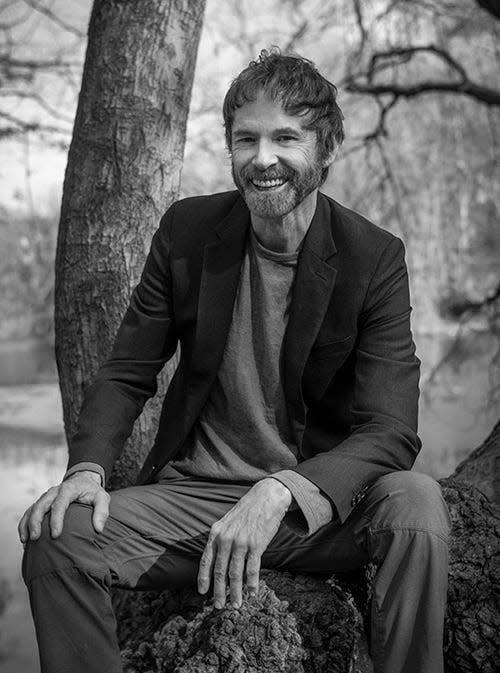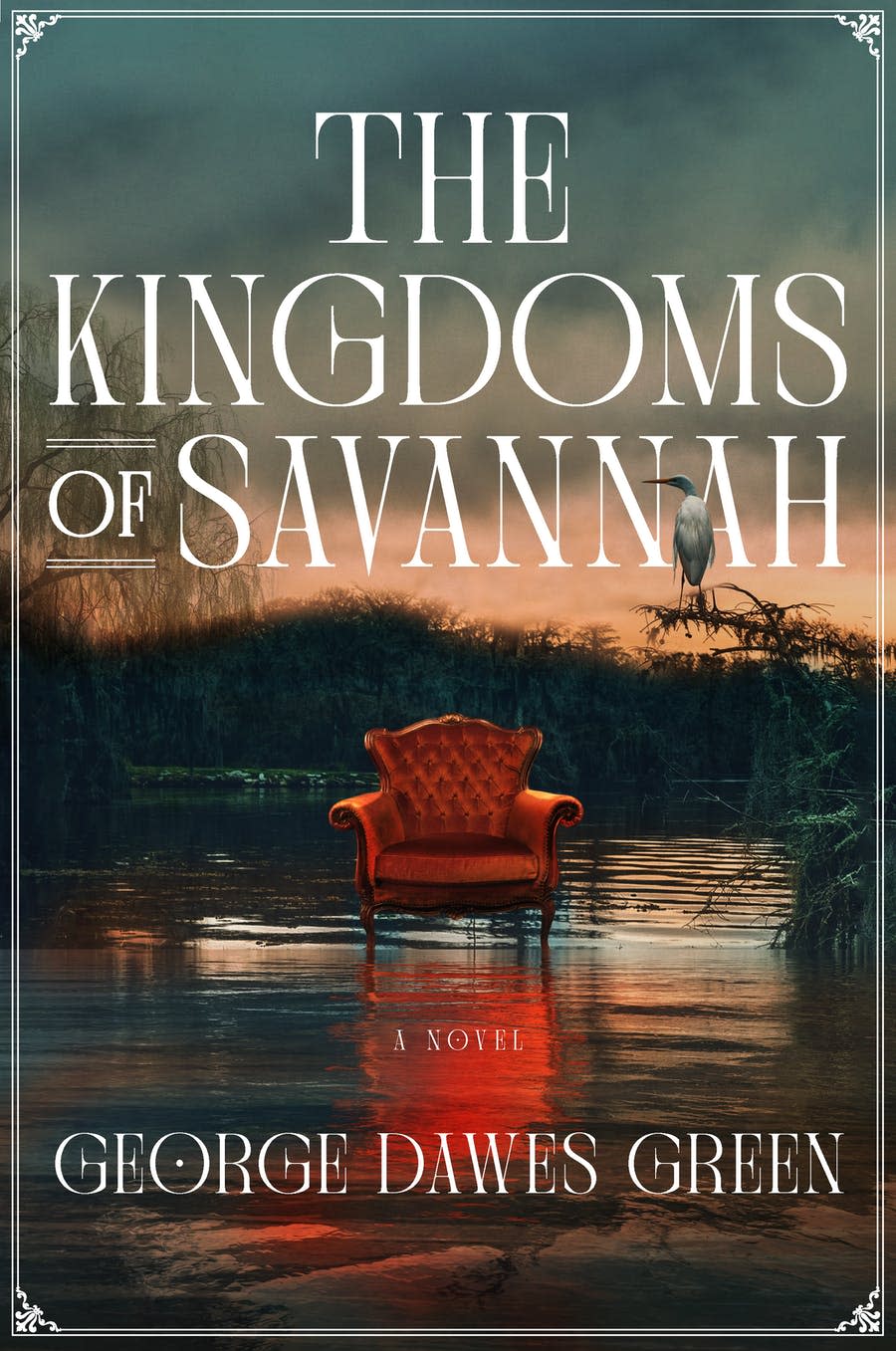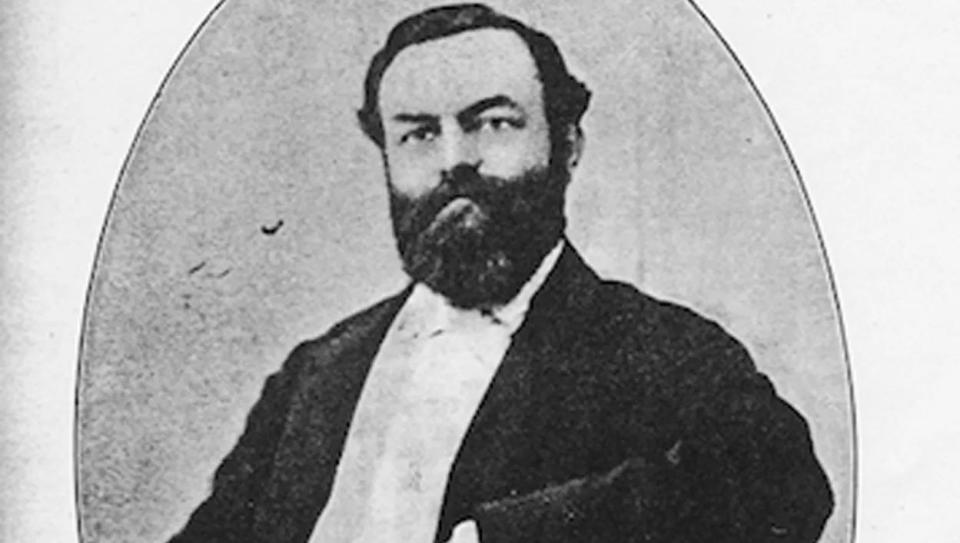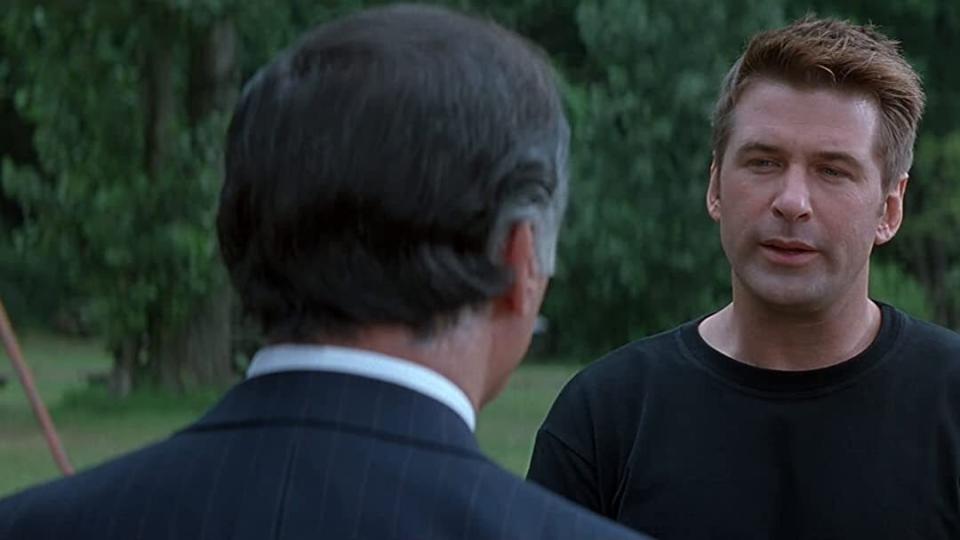George Dawes Green explores local hidden history in his latest novel, 'Kingdoms of Savannah'
- Oops!Something went wrong.Please try again later.
Savannah has always seemed uncanny, like the setting of an old fable or gothic mystery. Street lights casting bizarre shadows through gnarled oak branches and their mossy drapery, cobble stone streets and dark alleys, wildly varied architecture that makes you feel like you’re traveling thorough time from block to block, are just a few characteristics that add to Savannah’s haunting charm.
It’s only natural that New York Times best-selling author George Dawes Green’s latest whodunit, “Kingdoms of Savannah,” would be set in this strange and wonderful city.
Green, who splits his time between New York City and Savannah, comes from a family of 8th generation Savannahians, and in a way, has been building up to writing this novel for a long time.
Recent local literary news: Savannah Book Festival names new executive director, adds new board members
Other authors: Angela May hopes to get kids engaged in reading with her new book series with Mary Alice Monroe
'Savannah is a writers' town': The creative spirit of the city influences local authors
“I do feel like that,” said Green. “When I was a kid I didn’t live in Savannah. We bounced around various towns and cities in the North for years when I was a kid. Finally, when I was about 11, my mother finally prevailed because she was a Georgian.”

Although Green’s family settled in Brunswick, his mother considered Savannah her capital city. The family would make regular trips to Savannah in their Chevy Bel Air to visit cousins, and in hindsight, these excursions were formative for Green.
“They were very strange, very hot afternoon teas that a 12-year-old boy had to endure because you’d have to listen to these Savannah stories. My mother was often pounding them into my head and I resisted greatly to the point that when I was 15 I dropped out of high school and put thumb out and hitchhiked to New York. But I did keep coming back and eventually I felt the allure of this strange city. Finally, I moved back here, and I feel in some bizarre way it’s my capital city, as well. So I’ve always wanted to address that in a book. I finally did.”
Recent local writing: Exploring process of mourning: 'Shivah: A Novel from Memory' author Lisa Solod discusses memory
“Kingdoms of Savannah” is about Morgana Musgrove, a doyenne of Savannah society, who is asked to solve a case involving arson, a “disappeared person,” and a murder. Musgrove is a conniving and difficult woman with a dysfunctional family. She enlists the help of her four reluctant adult children, who eventually help her uncover dark secrets that those in power would prefer to keep hidden.
Part of Savannah's tourist industry is built upon the city’s rich and complex history, but some of Savannah’s more unpleasant history is often obscured or ignored. It’s this hidden history that Green finds fascinating and draws from in the construction of his mystery.

“I’m always interested in why certain stories are told and others stories are not told, because I think stories shape the character of a city,” said Green. “The fact these stories were not told, is to me fascinating. There are so many dark things about Savannah, and also some inspiring things about Savannah history that no one ever hears. Those episodes are all intertwined in the book. These historical events are at the root of the contemporary mystery. The book is a modern detective story, but it has lots and lots of history, and a lot of the history are these stories that are never told.”
Green was inspired by a paper, written by his friend, Savannah historian John Duncan, about a group of Black soldiers who fought for the King of England during the American Revolution. After the war, rather than return to slavery, many of the Black soldiers founded an encampment north of Savannah along with Native Americans.
That's so Savannah: Plenty of Savannahians dispute origins of Chatham Artillery Punch
Also: That's So Savannah: That secret castle in the woods was once filled with explosives
“There are a number of people now who are trying to do some more extensive research into this community that lasted a number of years,” explained Green. “It’s an extraordinary story, and it’s an inspiring story. It’s one that, like so many of these fascinating stories, it isn’t history, for one reason or another, that has been passed on to us, and I am fascinated by the question of why.”
Green took a deep dive through the Georgia Historical Society archives to research this story, and even went so far as to borrow his friend’s canoe to look for evidence of the lost site.
Another piece of Savannah history Green was inspired by was the infamous Charles Augustus Lafayette Lamar. A “narcissistic bully and one of the richest men in Savannah,” Lamar and his pro-slavery Fire-Eaters helped engineer the Civil War with the hopes of building an Empire of Slavery.
More on Lamar: Historian uncovers illegal slave-trader's dubious dealings
“That’s completely obscured in textbooks and people in Savannah just don’t understand this at all, and I just find that fascinating,” said Green. “It’s amazing because one of the things he did was to provoke the New York Times. This was one of the things the Fire Eaters were always trying to do. There’s a few episodes that people talk about. He bought the fastest yacht in America and went to Africa and kidnapped 600 people and brought them to Georgia, and there were only 400 left that survived the journey, and sold them into slavery. He only did that to provoke the Buchanan administration and the New York Times into an attack, which came of course and he shouted, ‘False news!’ He claimed that he was a victim and just being picked on and that all of his followers were victims.

“It was Charlie Lamar creating stories and then manipulating how they’re told to create an atmosphere, shape the city that he wanted, and that has been true throughout Savannah’s history.”
Local readers will recognize many of the places depicted in Green’s novel, real or fictionalized. Adding to the fable-like quality of “Kingdoms of Savannah” is a Tolkienesque illustrated map printed on the inner cover that marks Savannah landmarks from the book.
Boo Business: Enjoy accessible tours of Savannah’s famous cemeteries using just your phone
“It has all of these completely separate little worlds and that’s what I mean by the title, ‘The Kingdoms of Savannah,’” explained Green. “There are these separate enclaves and they don’t mix very much. There’s a Black community, there’s a homeless community, there’s the enclave of the very wealthy, there’s the gay community. There’s all these little kingdoms and they’re so close to each other. It’s just a tiny, little town. It’s easy to stroll from one end of the town to the other, and my characters do that every day. I have a character that lives in one of the homeless encampments out under the Harry S. Truman Parkway, and he just walks into the town everyday. That's what most of the folks who live in that encampment do.”

While celebrating the release of his latest novel, Green is also marking the 25th anniversary of The Moth, the world renowned storytelling series he founded in New York City. What began as small gatherings at apartments, soon spread to events at bars, then large venues like the Lincoln Center.
Now, The Moth has clubs and events all over the world, and millions of listeners of its podcast. Green celebrated with a special sold-out reading at The Gingerbread House featuring some of Savannah’s greatest storytellers including New York theater legend Edgar Oliver, Opollo Johnson, Aberjhani, and Jane Fishman.
Jane Fishman columns: 'It's the joint': Roosevelt Brownlee feels at home on Ossabaw, filled with tales of food and jazz
Other Fishman columns: Bigger and bigger container ships sail through Savannah's port. What does all the stuff get us?
“I was very inspired by growing up in south Georgia and spending a lot of time out on porches when I was a young man, drinking on porches, listening to stories,” said Green. “That’s one of the things I was thinking about when I started The Moth. I love the idea of coming back now and celebrating the 25th Anniversary of the Moth with some great Savannah raconteurs.”
Work of George Dawes Greens went print to the big screen
Although Green is primarily a writer of thrillers — his book “The Juror” (1994) was an international hit that was adapted into a movie starring Demi Moore and Alec Baldwin — he is inspired by the pure storytelling skills of raconteurs.

“When a great raconteur is telling a story there’s a simplicity, and a directness, and an immediacy,” said Green. “I don’t necessarily try for that in my fiction because I write thrillers. I like the scaffolding of a thriller, so they’re very different, but I do always aspire to that simplicity and immediacy. I think if I did train my fiction writing with what I was hearing at the Moth, I think it would be better in some way, but they’re very different disciplines.
“One thing I love in books, I love the moment when you feel caught up in the flow of turning pages. You’re utterly captured by the story you’re reading, and that’s the same feeling as when you’re listening to a great Moth story.”
This article originally appeared on Savannah Morning News: Author George Dawes Green talks new novel Kingdoms of Savannah

